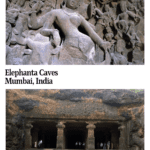Elephanta Caves
By Rachel Heller
What is Elephanta Caves?
Elephanta Caves is a complex of caves on an island off of the city of Mumbai. It was created as part of the Hindu cult of Shiva in the mid-5th to 6th centuries AD. The caves were cut into a rock hill, and the main cave, called Cave 1, still holds extensive and detailed sculptures and bas-reliefs depicting various versions of Shiva.
Disclosure: This article contains affiliate links. Making a purchase through an affiliate link will mean a small commission for this website. This will not affect your price.
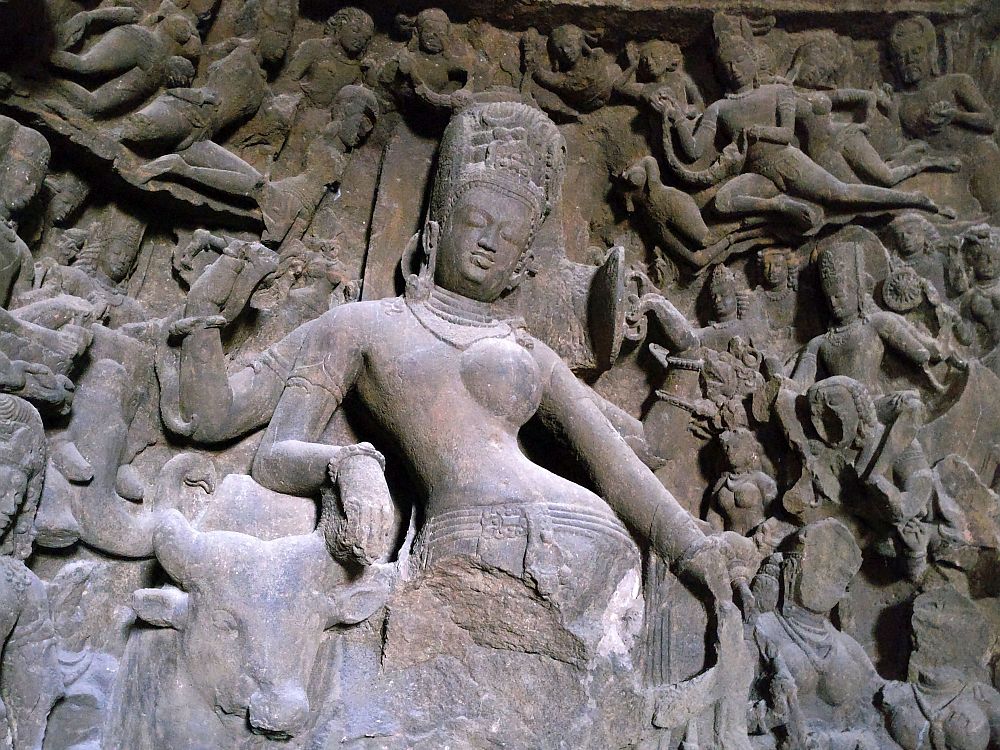
Cave 1 is 27 meters square and supported by pillars carved from the rock. The layout of Cave 1 is very similar to those at Ellora, also a UNESCO World Heritage site in India. The centerpiece of the cave is a seven-meter-high statue representing the three aspects of Shiva (creator, preserver, destroyer), and the 15 large bas-reliefs in the cave each show other representations of Shiva.
The UNESCO designation includes a number of different caves, but only Cave 1 has much in the way of artwork, since the others are so damaged and eroded.
Why is Elephanta a UNESCO World Heritage site?
Cave 1 contains “one of the greatest examples of Indian art,” according to the UNESCO listing, and “the most magnificent achievement in the history of rock-architecture in western India.”
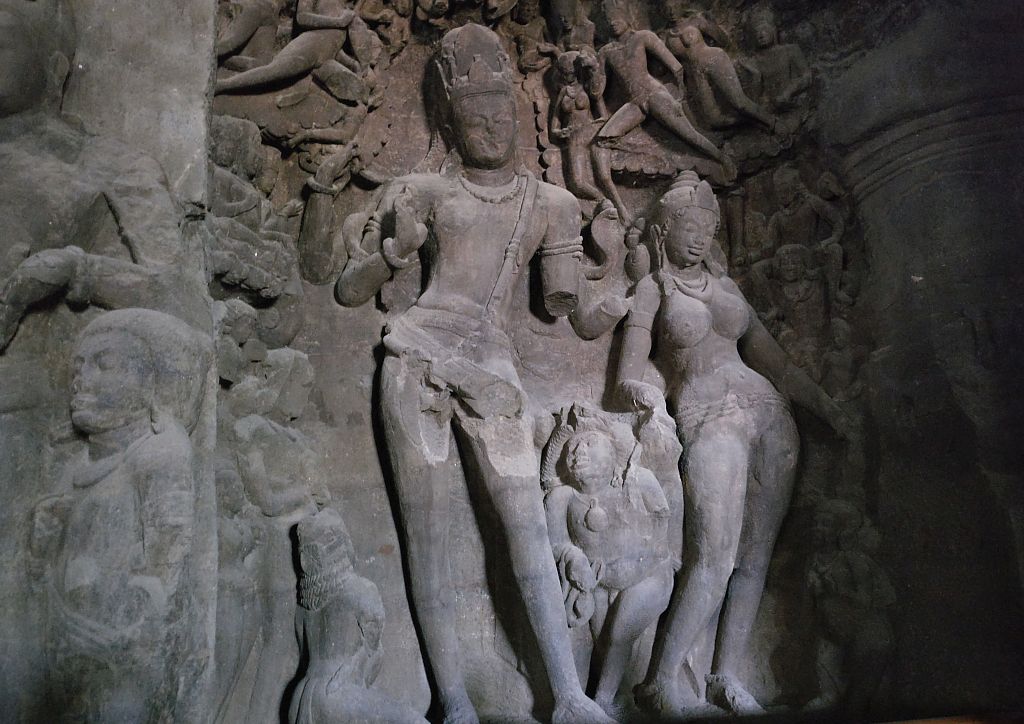
What can you expect on a visit to Elephanta Island?
You can expect to spend about half a day to visit this site, since it takes some time to get there: first the ferry from Mumbai to the island, then the walk along the long jetty and up a stairway of about 120 steps to get to the site, and then the same to get back to Mumbai.
On the walk up, you’ll pass lots of hawkers selling souvenirs, and monkeys too, that live in the woods on either side and can be quite aggressive. Entering the site of the caves at the top, though, is a step into relative peace and quiet.
Is Elephanta Island worth visiting?
Elephanta Caves UNESCO site is certainly worth visiting if you are interested in Indian religions and their history – or just the Shiva cult in particular – and/or religious art. It’s also a welcome break from the incessant honking and general traffic noise of Mumbai.
Tips for visiting Elephanta Caves?
Watch out for the monkeys! They will grab anything they spot that might be food or water.
Be prepared, as already stated, to walk a lot, and if it’s a hot, muggy day, make sure you have water with you, but keep it inside a bag where the monkeys won’t see it.
If you have limited mobility, you might want to skip this site. You’ll have to manage stepping onto and off of the boat. You can take a mini-train from the boat down the jetty, but then there will be a few steps to the beginning of the long stairway. There you can hire people to carry you up the stairway in a chair, but you’d still have some steps to enter and exit some of the caves.
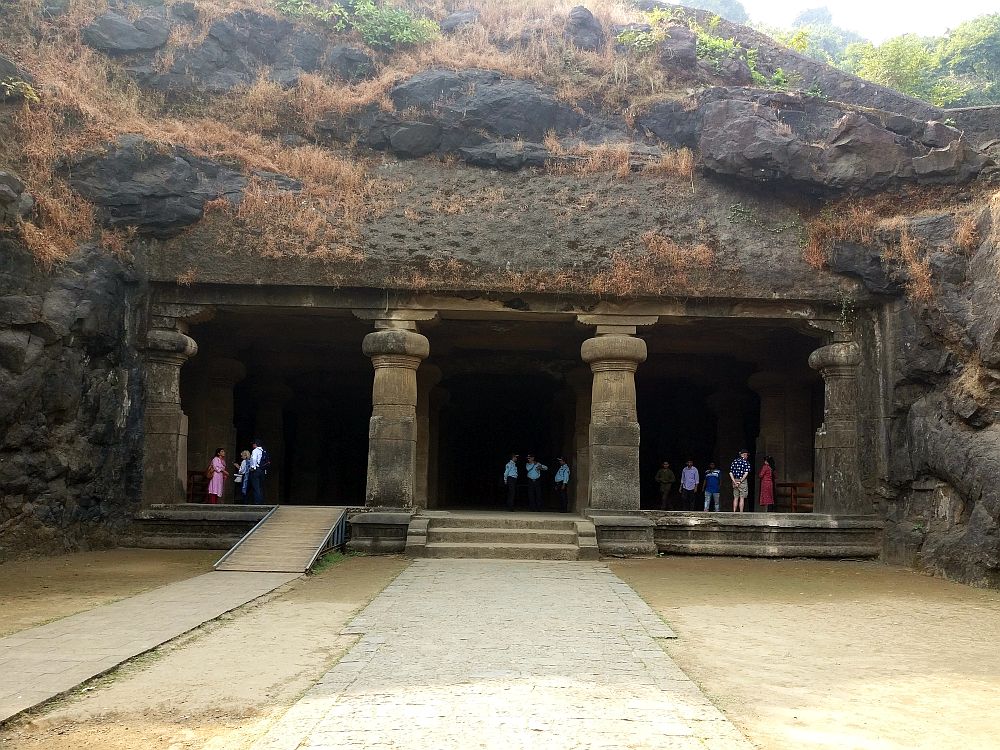
Have small change with you. You’ll need to pay for the ferry, an extra charge to ride on the deck of the ferry, the mini-train (if you want to take it) along the jetty on the island, a small fee to enter the village on the island, and your entrance fee to the UNESCO site itself.
For more tips about visiting Elephanta Caves, read 7 things to know before you go.
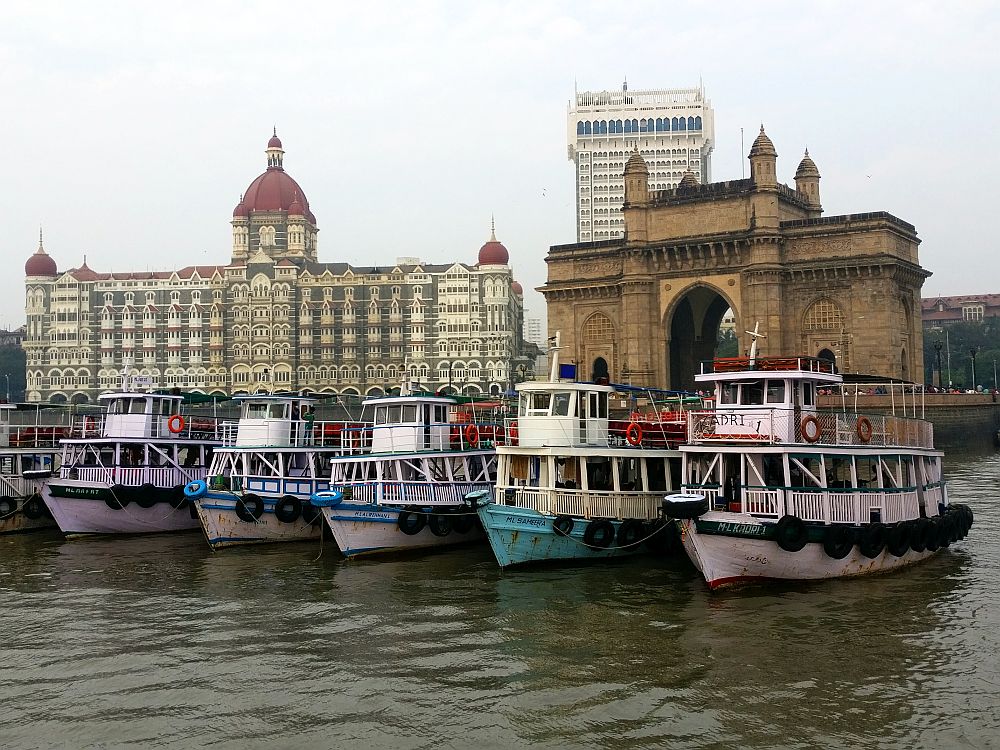
Where is Elephanta Island?
Elephanta Island, also known as Gharapuri, is reachable by a one-hour ferry ride from Gateway of India, which is right near the famous Taj Mahal Palace Hotel.
If the Taj Mahal Palace is beyond your budget, click on the map below to find other accommodations in the vicinity of Chhatrapati Shivaji Maharaj train station, also a UNESCO site, not far away from the Gateway:
Buy your ticket for the ferry from the ticket booth to the right of the entrance to the plaza in front of the Gateway. The ferry dock is just beyond the Gateway from there. If you want to ride upstairs on the deck of the ferry, you’ll need to pay extra once you’re on the boat – it’s worth it for the views and relative quiet.
Once you arrive on the island, follow the crowd down the jetty and to the right, where you’ll pay an entry fee to the village of Gharapuri. There, you’ll see the stairway; just follow it straight up.
If all of this sounds too complicated, take a guided tour.
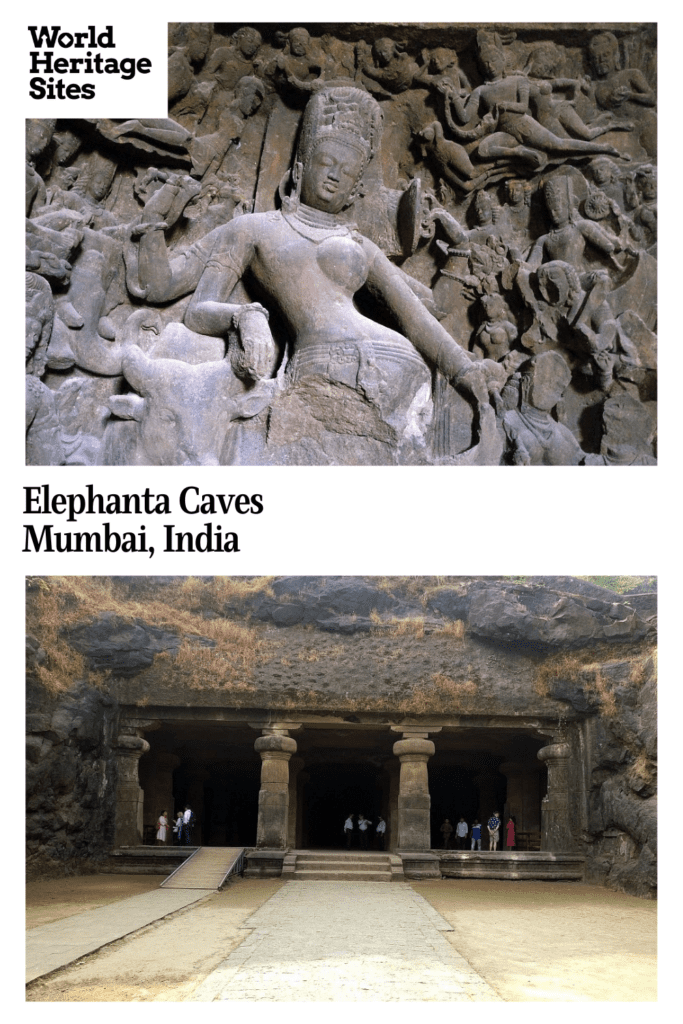
For lots more information about Elephanta Caves, its opening hours and admission fees, see this website.
Have you been to Elephanta Island? If so, do you have any additional information or advice about this UNESCO World Heritage site? Please add your comments below!

